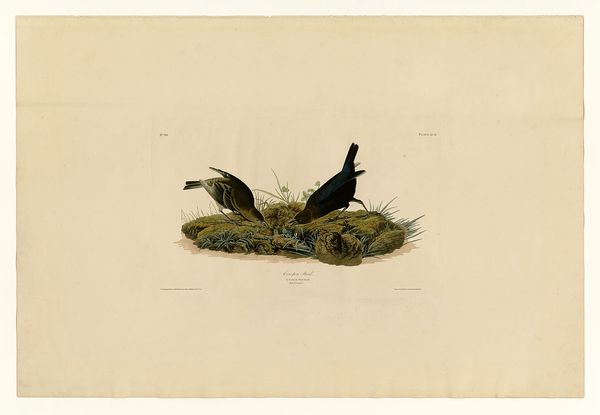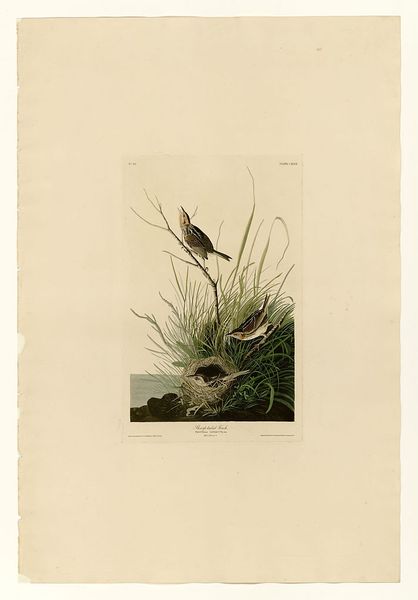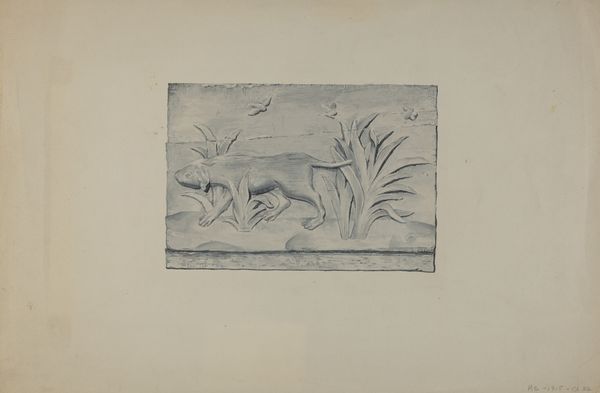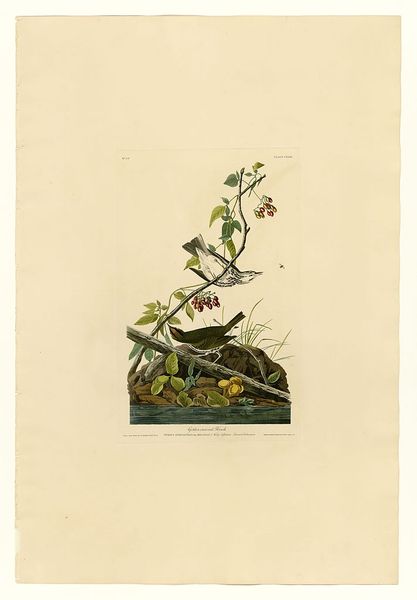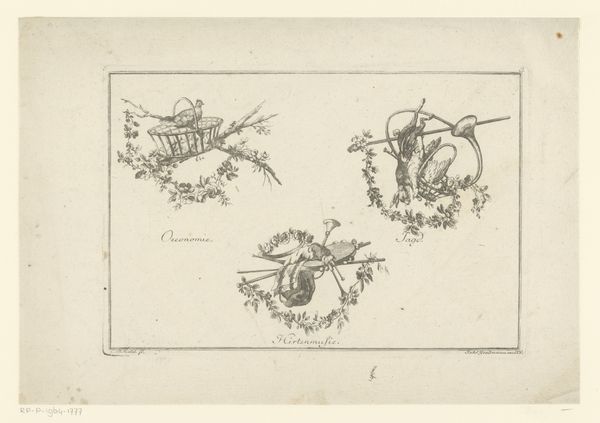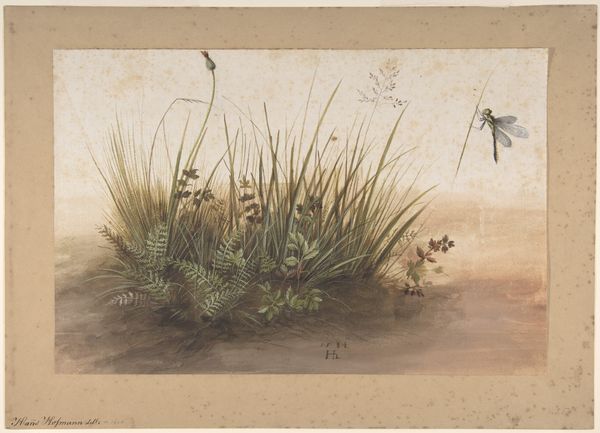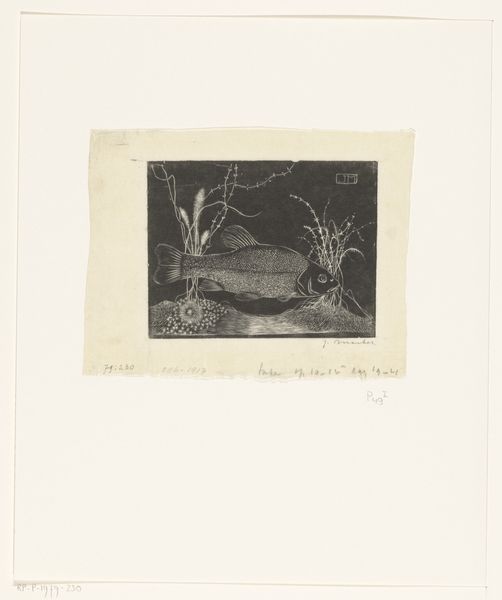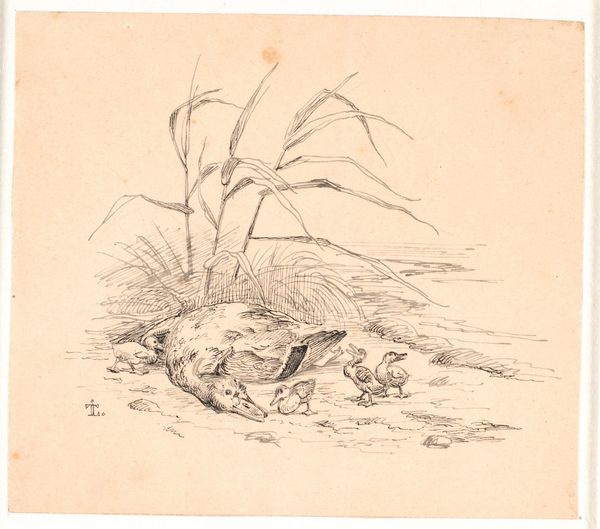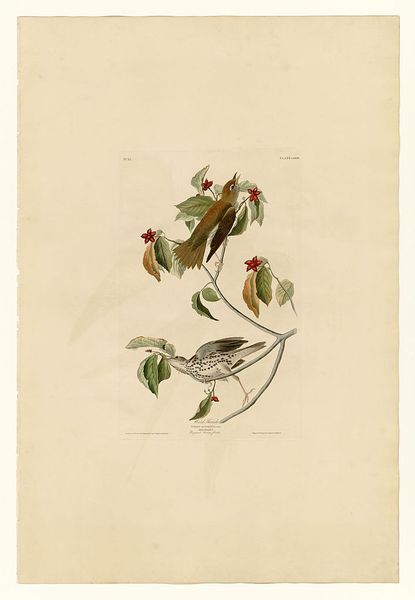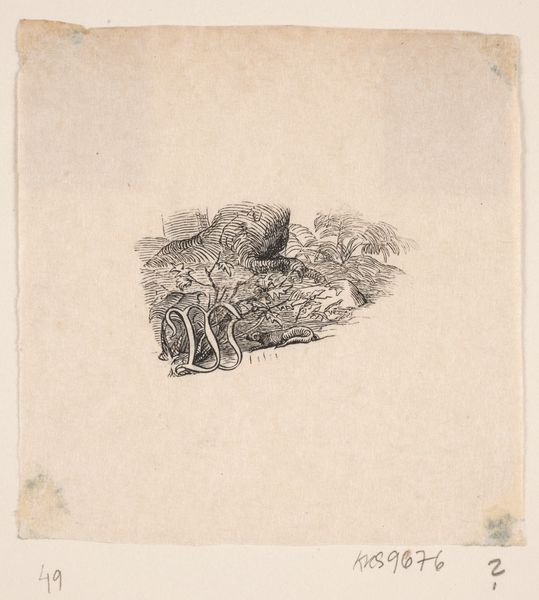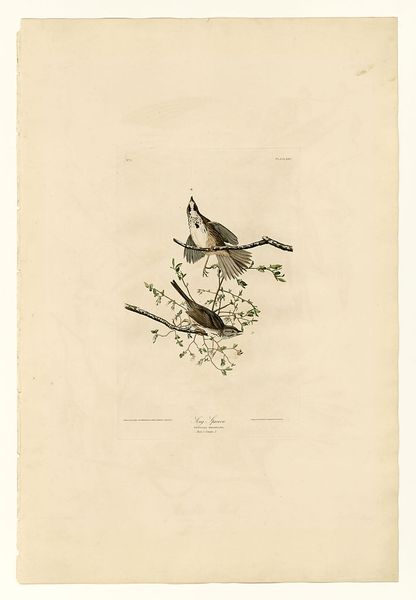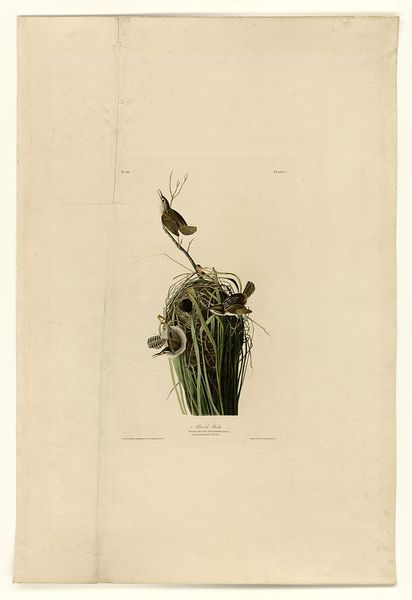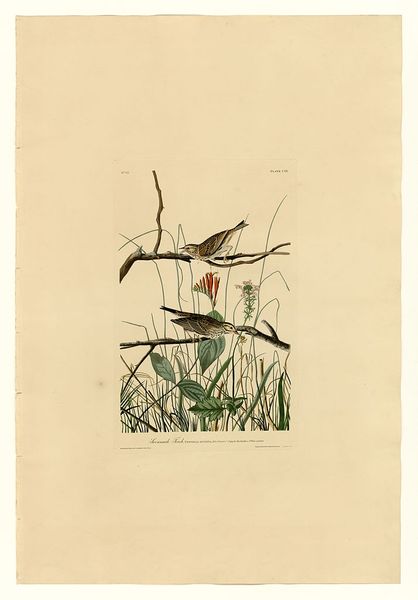
drawing, painting, paper, watercolor
#
drawing
#
painting
#
landscape
#
bird
#
paper
#
watercolor
#
romanticism
#
watercolour illustration
#
history-painting
#
botany
#
naturalism
#
watercolor
Copyright: Public domain
Curator: Let's turn our attention to a delicate watercolor illustration rendered on paper. The piece presents a "Fox-coloured Sparrow" and is attributed to John James Audubon. Editor: Wow, the instant pull for me is this intense, almost theatrical stillness. It’s as if we’ve stumbled upon a private scene frozen mid-narrative. Like a bird opera, but quieter. Curator: That’s an interesting observation! Consider the historical context. Audubon's approach can be viewed through the lens of colonial encounters with the natural world. He depicted these birds with scientific precision, yet also arguably contributed to a narrative of possessing and classifying the environment. How might we understand that today, particularly in the context of conservation? Editor: Absolutely, the gaze itself is loaded. I can't help but wonder about the actual experience. It had to be so arduous—documenting these birds with that level of meticulousness. I mean, you practically feel the scratching of his pen. Also, that singular red berry. I feel an almost unnerving anticipation... it draws you in so intently. Curator: It's relevant to highlight how Audubon's romanticized view of nature often overlooks the impact of settler colonialism and the displacement of Indigenous communities whose lives were intertwined with these landscapes. His work, while beautiful, can be re-evaluated within critical race theory and postcolonial studies. Editor: Ah, that hits, doesn't it? So, how do we appreciate the skill without turning a blind eye? I'm thinking about intention. There's definitely something about capturing that inherent aliveness. That spark of untamed existence. He wants to grasp what being a bird is really like. The sheer audacity! Curator: Exactly! It prompts critical engagement with issues of representation and power, urging viewers to question whose perspectives are privileged and whose are marginalized in our understanding of natural history. We can understand the scientific contributions whilst maintaining that important critical consciousness. Editor: You know, standing here, my impression is that, as flawed and as complex as Audubon was, what remains here is an enduring and deeply felt moment of connection to nature, of being witness to something extraordinary. Curator: Precisely. And maybe that complicated, ambivalent reaction we feel IS the point. The piece sparks a discussion; it isn’t just observed silently.
Comments
No comments
Be the first to comment and join the conversation on the ultimate creative platform.
